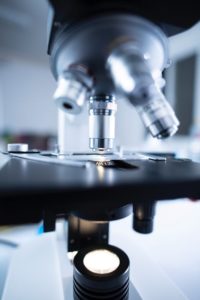Process of IVF
Infertility is exhausting. It’s heartbreaking. It’s relationship-testing. It’s something you’d rather not deal with. Period.
 But it’s not insurmountable and many women have had success conceiving with the use of in-vitro fertilization, or IVF. The process of IVF seems long and daunting when you first review it with your doctor, but it really is an excellent option for many women and tens of thousands of births occur each year with the help of in-vitro.
But it’s not insurmountable and many women have had success conceiving with the use of in-vitro fertilization, or IVF. The process of IVF seems long and daunting when you first review it with your doctor, but it really is an excellent option for many women and tens of thousands of births occur each year with the help of in-vitro.
IVF has been around for some time – decades, actually. And though you likely know the basic premise behind the process of IVF – uniting egg and sperm outside the body – you probably want to know more of the details as you take the time to consider this very successful method designed to help you get your family started.
Step-by-step
Simply put, there are five basic steps to in-vitro fertilization and they are outlined below. Though this explanation doesn’t include all the miniscule details, it can help you better understand the process of IVF in general.
Boosting ovulation
To undergo IVF, you need eggs. Seems simple, right? But most women undergoing this treatment need help to stimulate ovulation so that as many eggs as possible can be collected. So, drugs are given that will “stimulate” the ovaries and prompt them to produce more than the usual one egg per month. The more eggs your body produces, the better the chance of having a successful pregnancy. During this step in the process, ultrasounds and blood tests will be used to monitor hormone levels and check on your ovaries.
Removing the eggs
About a day before your eggs are scheduled for removal, you’ll receive a well-timed hormone shot that will help them mature. Then a procedure known as follicular aspiration will be done, which will allow the doctor to retrieve your eggs. This is an outpatient procedure done with ultrasound and a fine needle that goes through the vagina into the ovaries to retrieve the eggs. Pain meds are provided beforehand to minimize discomfort, and though some post-procedure cramping might occur, it’s basically painless.
Collecting the sperm
Sperm is then collected from your partner or, if you’re using donor sperm, that is accessed at this time. The sperm is put through a “washing” procedure that allows the best to be collected and used for the next step.
Uniting egg and sperm
At this point, your doctor is confident that he/she has found the best sperm and the best eggs and now it’s time to bring them together in a process called insemination. How this is done will be determined by your specialist but it’s part of the process in which you won’t be directly involved.
Implanting the embryos
After your eggs have been collected, you will receive another medication that will ready your uterus to receive the fertilized eggs. About 3-5 days after insemination, a transfer will happen and the embryos will be placed in your uterus with the help of a catheter. This is done in your doctor’s office while you are fully conscious. Multiple eggs are often inserted in the hopes that at least one “takes”. Because of this practice, IVF users sometimes have “multiples”, like twins or triplets.
Once this is complete, you’ll just need to wait for the next step – the pregnancy test – to determine the success of the IVF process. This will happen around 7-12 days after the transfer.
Have more questions about the process of IVF? Call our office to schedule an appointment with one of our fertility experts, who can explain IVF in detail and talk about your potential as an IVF candidate.
Go back